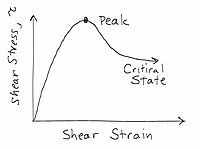
Photo from wikipedia
The most popular methods of characterizing a composite’s fatigue properties and predicting its life are phenomenological, meaning the micro-mechanisms of composite structures under cyclic loading are not treated. In addition,… Click to show full abstract
The most popular methods of characterizing a composite’s fatigue properties and predicting its life are phenomenological, meaning the micro-mechanisms of composite structures under cyclic loading are not treated. In addition, in order to characterize the fatigue properties, only macro-parameters, namely strength and/or stiffness, are adopted. Residual strength models are mostly used in practice, given their strong relationship with safety and reliability. Indeed, since failure occurs when the strength degrades to the peak stress of fatigue loading, the remaining strength is used as a failure index. In this paper, based on a wide set of literature data, we summarize the capabilities of four models, namely Caprino’s, D’Amore’s, Sendekyj’s, and Kassapoglou’s models. The models are briefly described and then applied to the same data set, which is re-elaborated. The selected experimental data are recovered from a large experimental campaign carried out by the Federal Aviation Administration (FAA). Specimens of the same material were subjected to different loading in terms of peak stress, σmax, and stress ratio, R = σmin/σmax, ranging from pure tension (0 < R < 1) to prevalent tension (−1 < R < 0) to tension-compression (R = −1) to pure compression (1 < R < ∞). The data represent a formidable test bed to comparatively evaluate the models’ capabilities and their predictive prerogatives. The models are also tested with respect to their ability to replicate the principal responses’ feature of composite materials subjected to constant amplitude (CA) loadings. It is shown that Caprino’s and D’Amore’s models are equally capable of adequately fitting the experimental fatigue life data under given loading conditions and predicting the fatigue behavior at different loading ratios, R, with two fixed parameters. Sendekyj’s model required different parameters’ sets for each loading condition, and Kassapoglou’s model was unable to fit the majority of fatigue life data. When compared on the basis of the residual strength data, only the recently developed D’Amore’s model revealed its reliability.
Journal Title: Materials
Year Published: 2019
Link to full text (if available)
Share on Social Media: Sign Up to like & get
recommendations!